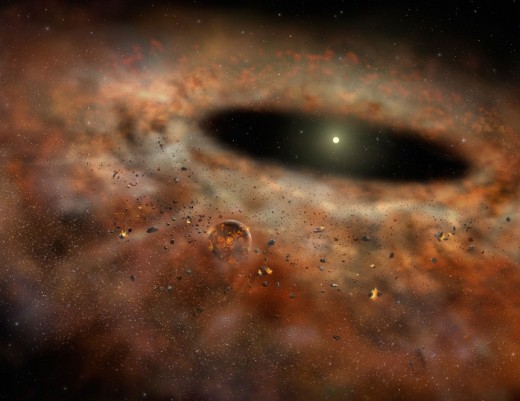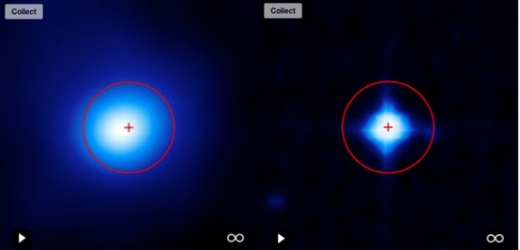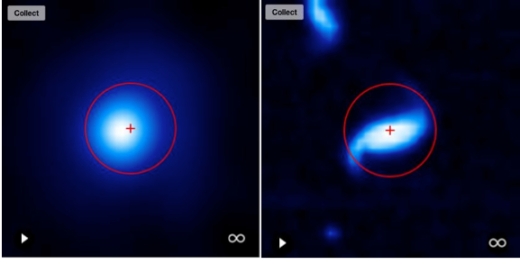(http://russjamieson.com/wp-content/uploads/2014/04/Lynette-Cook-star-with-dust-862×666.jpg)
Citizen science projects are projects that the public can get involved with on various topics ranging from humanities to astronomy. Zooniverse, which is an organization that offers various citizen science projects, has launched a new project called Disk Detective. In Disk Detective, users search for disks of dusty material around stars.
When looking at a star in infrared, which is a different wavelength of light than the light humans are able to see in, scientists may be able to see a disk orbiting around them. Disks are made of gas, dust, and debris that exist as a circular shape in orbit around a star and were formed at the star’s birth. There are two forms of disks that orbit around different stars: debris disks and YSO disks. The stars that debris disks orbit around are 5 million years old or older with the disks being mainly composed of rock and ice. YSO, short for Young Stellar Object, are young stars typically found in clusters and are about less than 5 million years old. Unlike debris disks, YSO disks are instead mostly made of gas similar to what makes up gas giant planets. YSO disks can lead to the emergence of a solar system while debris disks contain remnants of material that helped form its solar system.
Stars can emit light in various wavelengths, however, the disks that orbit them absorb the light and re-emit it in mainly infrared light, which makes the stars stand out because of all the infrared radiation that their disks emit. Identifying potential stars that have these disks was one of the goals for the Wide-field Infrared Survey Explorer telescope, also known as WISE. However, WISE has collected too much data for scientists to analyze by themselves over the course of its mission. Due to this problem, scientists decided to open this project to the public for them to further help investigate this topic, which is why Disk Detective was created. In Disk Detective, users will be looking at images of objects in multiple types of light in order to determine whether or not the candidate satisfies the requirements to be a disk. The user selects characteristics from a list that matches up with the object that they see and their responses then get compiled together for scientists to analyze and eventually conclude whether or not the candidate fits the description they’re looking for. Scientists are asking the public to identify these stars instead of using computers because computers can’t properly determine what the object they’re looking at is since they lack the ability to make proper judgements of objects by their appearance and characteristics. Human eyes, however, are very precise when it comes to categorizing objects. This is very helpful for Disk Detective because every object that has dust looks like a blob in images from WISE, so often looking in the optical can help you determine whether or not an object is a star or a galaxy by looking at the objects features such as cross patterns or spiral arms. These screen shots from Disk Detective help explain why the users look at objects in different types of light:
The object on the left is a candidate star with a disk observed in longer wavelength of infrared. The object on the right is the same candidate star observed in optical light, thus showing more defined characteristics of the star.
The object on the left is a candidate star with a disk observed in longer wavelength of infrared. The object on the right is the same candidate object but observed in optical light, thus revealing that the object is a galaxy and not a star!
The public can get involved in Disk Detective by going to diskdetective.org and searching for stars with potential solar systems. I’ll continue my adventures in Disk Detective and report back any new findings. Until then, see you!


